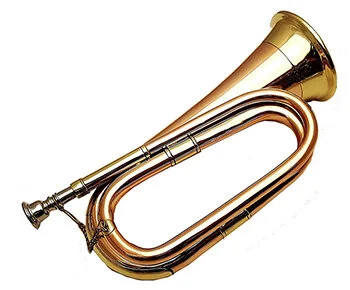TAPS
The History and Performance of this Final Honor.
There are several stories that traverse the internet ~ about how TAPS came to be the best known and most recognized of all American military bugle calls. This one came straight from Arlington National Cemetery.
History ~ The Story of Taps:
by Kathryn Shenkle, an historian with Arlington
The 138-year-old bugle call was composed by Brig. Gen. Daniel Butterfield, who commanded the 3rd Brigade, st Division, V Army Corps, Army of the Potomac, during the American Civil War.
Butterfield wrote "Taps" at Harrison's Landing, Va., in July 1862 to replace the customary firing of three rifle volleys at the end of burials during battle. "Taps" also replaced "Tatoo," the French bugle call to signal "lights out."
Butterfield's bugler, Oliver W. Norton of Chicago, was the first to sound the new call. Within months, "Taps" was sounded by buglers in both Union and Confederate forces.
"Taps" concludes nearly 15 military funerals conducted with honors each weekday at the Arlington National Cemetery as well as hundreds of others around the country. The tune is also played at many memorial services in Arlington's Memorial Amphitheater and at gravesites throughout the cemetery.
"Taps" is sounded during the 2,500 military wreath ceremonies conducted at the Tomb of the Unknowns every year, including the ones to be held this Memorial Day. The ceremonies are viewed by many groups, including veterans, schools, and foreign officials.
One of the final bugle calls of the day on military installations, "Taps" is played at 10 p.m. as a signal to service members that it is "lights out."
When "Taps" is played, it is customary to salute, if in uniform, or place your hand over your heart if not.
The composer of "Taps" was born Oct. 31, 1831, in Utica, N.Y., and joined the Army in Washington, D.C.
He was awarded the Medal of Honor in the U.S. Volunteers on June 27, 1862. After his brigade lost more than 600 men in the Battle of Gaines Mill, Butterfield took up the colors of the 83rd Pennsylvania Volunteers. Under heavy enemy fire, he encouraged the depleted ranks to regroup and continue the battle.
Butterfield died July 17, 1901, and was buried at the U.S. Military Academy at West Point, N.Y. "Taps" was sounded at his funeral.
Ron Haber, who's wife is a great-great-great niece of General Butterfield writes that there is a statue in Manhattan erected in the memory of General Butterfield. It stands in the park named Sakura Park at West 122nd Street between Convent Avenue and Riverside Drive. He stands on his pedestal with Riverside Church to his left and Julia Grant's Tomb fixed in his gaze directly ahead of him.
The 24 Notes of Taps
The Performances of Taps
This performance was provided by AWON Member Tom Ratliff. It was played and recorded by his son, Michael Thomas Ratliff, to honor his Grandfather, PVT Ova Wendell Ratlliff ~ during a presentation Tom made for Memorial Day 2008. To see the Ratliff Tribute, Click Here!
The music treatment of the 24 notes of Taps above is thanks to the Department of Veterans Affairs.






